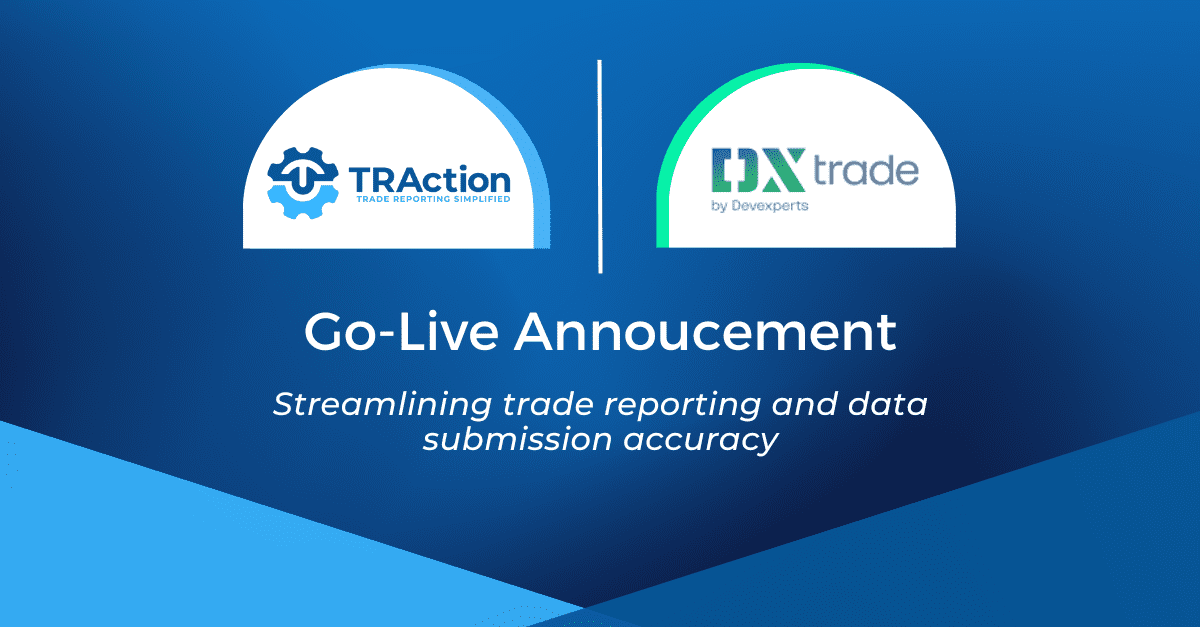With a lot of companies recently changing their trade reporting providers in the leadup to and aftermath of EMIR Refit and ASIC/MAS Rewrite, a common question is whether a delegate can close or correct a transaction for its client which was previously reported to a trade repository (TR) by a former delegate.
Often clients that come to TRAction are not newly established firms, but rather they already have some trade reporting in place. This may be either directly through their own internal trade reporting functions or through a trade reporting delegate.
This question may arise because firms wish to start using a trade reporting delegate in place of reporting to a TR directly (which they have found too hard to do themselves). Alternatively, they may already be doing their trade reporting through a delegate, the services of which they are not happy with – and in such cases, they may wish to have TRAction take over their trade reporting.
The client may have existing open positions which need to be managed once TRAction takes over their trade reporting services. Further questions arise with such firms, such as: ‘What are the next steps involved in this process? Can TRAction take over the trade reporting delegate services? How would this work? Is this worth doing, as it sounds too hard?’
The transition to another delegate can be complicated, depending on the regime you are reporting under and the TR to which your transactions are being reported. The easiest way to go about this would be to close off your reported trades and start again. The problem is that some regulators discourage this approach. Generally, regulators want the positions to be left open and migrated, even in cases where a change in the TR occurs. ESMA for example, in its 2024 Guidelines has high level principles (complemented with specific procedures) that should be followed by TR participants in porting from one TR to another e.g. counterparties, CCPs, report submitting entities and TRs.
Migration scenarios
Scenarios where migration may occur include the following:
- Client originally reports to TR1 directly themselves but later decides to delegate to a Service Provider (SP1), such as TRAction, who does the reporting for them to TR1.
- Client reports to TR1 via delegation with SP1 and moves from SP1 to a new SP (SP2), such as TRAction. TRAction would directly report the client’s trades to TR1. The client’s trade reporting relationship with SP1 has ceased.
In both the above scenarios – the client may need to report to a new TR i.e. TR2. This means that SP1 in scenario 1 and SP2 in scenario 2, would need to report the client’s trades to TR2 and the trade reporting relationship between the client and the following parties cease:
- TR1 (in scenario 1); and
- TR1 and SP1 (in scenario 2).
Next steps
See tables below which outline the steps that are permissible under the relevant regimes in situations where trades are migrated from one TR to another.
European region
| Migrate from | Migrate to | Regime the report submitting entity is reporting under | Steps |
|---|---|---|---|
| Any TR | DTCC | SFTR | Porting required |
| Any TR | LSEG | EMIR | Porting required |
APAC region – ASIC and MAS
| Migrate from | Migrate to | Regime the report submitting entity is reporting under | Steps |
|---|---|---|---|
| DTCC | DTCC | ASIC/MAS | TRAction can take over reporting of the same unique transaction identifiers (UTIs). |
Note that where porting is required by a TR, TRAction cannot report or correct anything outside of the TRAction environment.
MiFIR
In relation to MiFIR, given that the lifecycle of transactions is not applicable and therefore there are no open transactions that need migrating, if a previously reported transaction was found to be erroneous and needed correction but was reported by a previous service provider or ARM, then the following steps would apply:
| Migrate from | Migrate to | Regime the report submitting entity is reporting under | Steps |
|---|---|---|---|
| Any ARM | LSEG | MiFIR | Mark ‘Ignore Orphans Flag on LSEG UI (Configuration Modules > Optional validation), to ignore lifecycle (allow to submit ‘CANC’ when TRAction didn’t report ‘NEWT’) |
How can TRAction assist?
If you need assistance with your trade reporting as a new client, are considering changing your existing trade reporting delegate or have any other trade reporting question in general, please get in touch with us.




